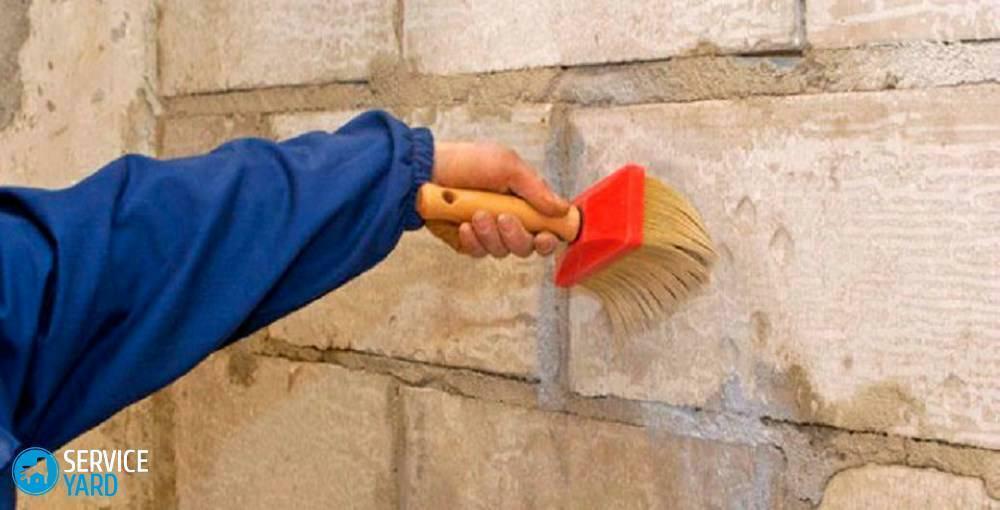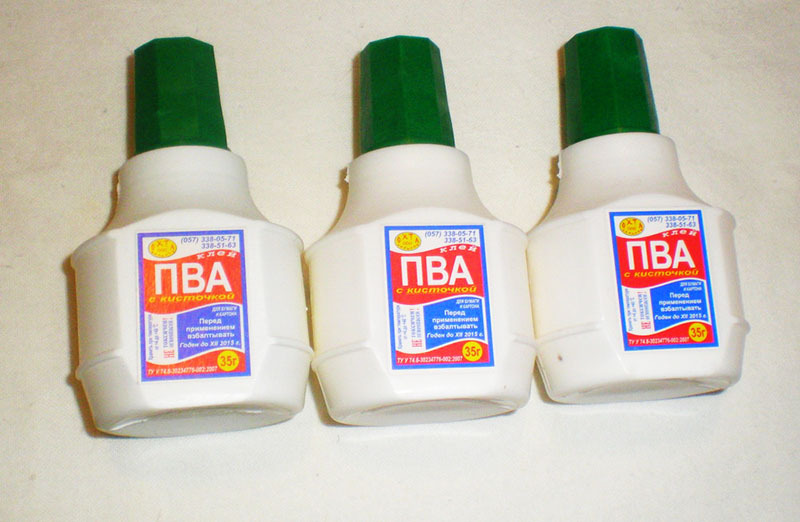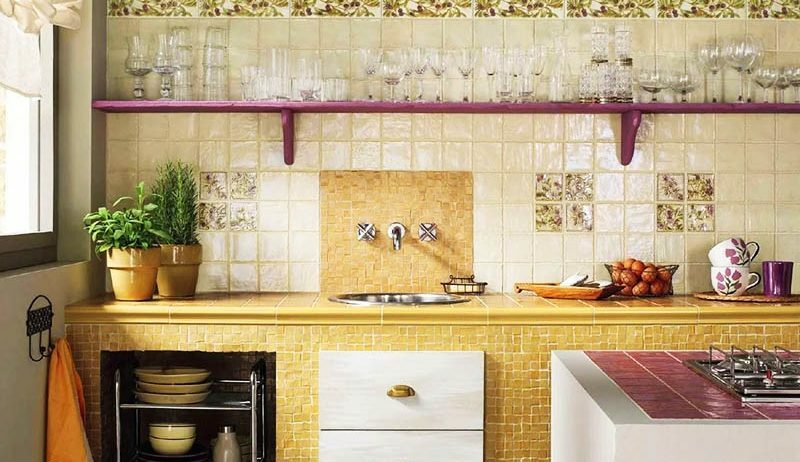
- What is convenient for painting the wallpaper?
- What kind of wallpaper can I paint?
- Do you need a primer for wallpaper before painting?
- Kinds of mixtures for the primer
- How to prepare and paint the pasted surface?
- What gives primer application?
Bonding walls with wallpaper - one of the most sought-after types of finishing work. In the market there is a huge selection of wallpapers: from traditional paper "tapestries" to fiberglass wallpaper. There are also so-called "liquid" wallpaper, which are applied to the wall on the same principle as plaster. Wallpapers designed for staining occupy a separate place. To the walls turned out to be really beautiful, you need to know the technology of pasting walls and applying a colored layer. Let's consider, whether priming of wall-paper before painting is necessary, what for it to do and what means to apply.
to the contents ↑What is the convenient way of painting the wallpaper?
The use of such materials for finishing works is extremely advantageous:
- can independently carry out quick cosmetic repairs;
- refresh the former color;
- painting the walls in a completely new color.
Important! It is not necessary to re-glue the walls. This approach is very economical, and the look of the walls pleases the eye.
to the table of contents ↑What kind of wallpaper can I paint?
As a rule, the original color of the wallpaper intended for painting is white. Depending on the material of manufacture, distinguish:
- Paper.
- Vinyl.
- Wall-papers.
- Non-woven.
Each of these types of wallpapering materials has advantages and disadvantages. For example, the glass walls are made of hypoallergenic material. In addition, they have well-defined antistatic properties. At their manufacture natural raw materials are used, therefore they are ecologically safe. The downside of fiberglass is the relatively large mass of the finishing cloth. For good adhesion, a special primer and special glue is used.
Important! When gluing walls with glass walls, it is not necessary to apply glue to the web( only on the surface to be bonded).When working, you must follow safety precautions. Work should be carried out in gloves and clothing with long sleeves. Neglect this rule does not follow, because the small glass filaments that form the wallpaper, getting on the skin, cause irritation.
to the contents ↑Do you need a primer for wallpaper before painting?
Like any other type of repair work, this one has its own technology. In order to qualitatively mount wallpaper materials, the following types of preparation of walls for gluing are made:
- Alignment.
- Primer.
- Plastering.
- Grinding.
- Cleaning from dust and dirt.
- Re-primer.
As you can see, not only need to primed wallpaper before painting, it is necessary to do it ideally twice. Only after the preparatory work can you install wallpaper.
Important! There is also a more economical option, which I suggest companies producing paint and varnish materials: decorative coating "primer-paint".You produce at the same time priming with coloring, while saving time and money.
to content ↑Kinds of mixes for primer
In building shops, there is an extensive selection of primer material. And, it can be materials for a certain surface or universal compounds. Here is a brief overview of the most popular mixtures with which priming wallpaper before painting.
Acrylic
For priming wallpaper is used as a deep penetration soil, and conventional. It is desirable to purchase products from well-known manufacturers:
- "Starateli".
- Knauf.
Important! The consumption of the material depends on the degree of porosity of the surface, and is 1 square meter from 100 to 200 ml. Apply a primer with a paint roller, and in hard-to-reach places - with a brush.
Adhesive adhesive
Read the instructions carefully. If it contains information that the compound can be used for priming - why not take advantage of this? If such an inscription is not - it is better not to take risks, but to purchase an acrylic primer.
Important! When using wallpaper paste as a primer, it is necessary to strictly observe the dilution ratio, otherwise - you are threatened with a large consumption of the product, which means a rise in the cost of repair work.

Primer for wallpaper for painting on the basis of PVA
This is an old, tried and tested version. This glue has been and remains popular in construction work. Some masters of the "old school" still consider PVA - the only acceptable option, and are convinced that the use of special primers - just wasted money.
Important! The only advantage of PVA over special soils is the low price. By adhesion, strength and durability PVA is inferior to them. In addition, it is quite difficult to find a really good glue for an inexperienced buyer. Therefore, the option PVA - for budgetary construction work, when you need to save every penny.
to the contents ↑How to prepare and paint the pasted surface?
So, the work on the pasting of the walls is over. How to paint the walls correctly? Will a primer be required for decorative coating? Which one is best to buy?
When choosing a primer mix, take into account 2 factors:
- The fabrication material for wallpaper.
- Chemical composition of paint.
Important! For glass pane is suitable for any primer, including wallpaper paste, diluted with water. In other cases, the primer is selected so that it corresponds to the chemical composition of the wallpaper: latex for latex, acrylic for acrylic, etc.
Rules for primer application:
- Apply the primer of the wallpaper before painting on the pasted wall with a wide brush and paint roller.
- Before priming it is necessary to make sure that the wallpaper paste is completely dry.
- This means that the walls can be treated several hours after pasting, or even better - the next day.
- Treated wallpaper should be left to dry for at least half a day.
Important! If you plan to use water-dispersion or water-based paint, you need to choose a primer with a water repellent effect.
Staining rules:
- Before applying the paint, it should be mixed thoroughly.
- If it is too thick, then dilute to an acceptable consistency.
Important! Liquid paint covers the canvas with a thin layer. For high-quality painting of walls this is of great importance.
- According to experts, it is better to paint in two thin layers than in one thick.
- Before applying a new layer, the previously applied paint must dry completely.
- The duration of the interruption depends on the characteristics of the paintwork material.
Important! Practice shows that wallpaper linens "for painting" are able to withstand 6 cosmetic repairs. Of course, too many layers of paint make the surface less attractive.
to the contents ↑What gives primer application?
- Improves the adhesion between the substrate and the decorative coating.
- Additional protection of wallpapers.
- Increased durability and strength of the finishing material.
- Save the paint.
- Smooth painting of walls, without stains and stains.
So, is there a need for a primer for wallpaper for painting. Of course, this is not necessary, but it is desirable. Paint falls better, does not form ugly stains and divorces. The painted surface looks more attractive. And how to achieve this effect, you now know.


